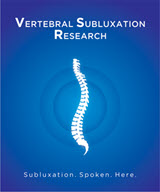Texas Chiropractic Scope Issue Sent Back to Trial Court

The case revolves around whether a testing procedure in a 2006 rule adopted by the Texas Board of Chiropractic Examiners qualifies as "practicing medicine" with the appellate court ruling that the case involves a mixture of law and fact. The Court holds the facts haven’t been clearly settled and makes the trial court’s decision to hold the law invalid premature.
The procedure known as vestibular ocular nystagmus testing (VONT) and the dispute boils down to whether or not the test can be used to diagnose problems amenable to chiropractic management.
Chiropractic in Texas is specifically limited to addressing biomechanics of the musculoskeletal system and the vertebral subluxation complex. This recent ruling is just the latest in a six-year battle over rules adopted by the TBCE in 20016 following a legislative mandate that it more clearly define its "scope of practice."
In addition to VONT, the TMA and the chiropractic board have been locked in legal battles and exchanges of threatening letters over needle electromyography, manipulation under anesthesia, sports physicals, and use of the term “chiropractic neurology.” The chiropractors just recently upset the TMA by seeking to define the term “biomechanics” and “musculoskeletal system” in obvious relation to the current legal battle. The chiropractic board defined musculoskeletal system as:
The system of muscles and tendons and ligaments and bones and joints and associated tissues and nerves that move the body and maintain its form.
The inclusion of “nerves” is an obvious attempt to ensure that the nervous system is included under chiropractic’s scope considering that the TMA has argued it is not.
Interestingly, the court cited deposition testimony submitted by the chiropractic board of a chiropractor who uses VONT to diagnose benign paroxysmal positional vertigo (BPPV). Following the diagnosis he then treats the BPPV using the “Epley maneuver.”
According to the appellate court:
"The fallacy in this argument is that it is evident from the TMA’s summary-judgment evidence that the procedure that corrects BPPV, the ‘Epley maneuver,’ is not necessarily within the scope of the ‘practice of chiropractic.’”
This is interesting since some of the contention surrounding the scope issue in Texas has to do with “chiropractic neurology” or “functional neurology” and procedures that are used by a few hundred practitioners with postgraduate training in this area. Even adherents to the practice of functional neurology oftentimes state that it’s purpose is not to manage vertebral subluxation, the musculoskeletal system or biomechanics but instead is used to effect the brain itself.
It would seem that the chiropractic board will need to argue that VONT testing can be utilized to manage vertebral subluxation in order to prevail in this case. In order to do so any contentious issues between adherents of functional neurology and mainstream chiropractors whose clinical focus is vertebral subluxation, might have to be bridged.
Fundamentally, the Texas Medical Association is taking an aggressive approach to protecting medical physician’s scope of practice and chiropractors have not been their only target which includes podiatrists and marriage and family therapists. Their argument is that only a medical physician is properly trained to lead a health care team and diagnose and manage the full spectrum of a patient’s ailments.
There is currently heated debate within the chiropractic profession regarding educational training and the claim by many, including chiropractic schools, that chiropractors are trained as primary care providers and physicians. One wonders if opening this can of worms will demonstrate evidence that the rigor and scope required to train a primary care physician is indeed provided by a chiropractic education.
Blogs
- The Chiropractic Cartel: A Look Back at Bias in Accreditation and its Imact on Today's Profession
- Inside Montana's Chiropractic Monopoly: ACA & MCA's Brazen Board Takeover
- Concerns Grow About Control of the NY State Chiropractic Board by the ACA - Use of X-ray in NY Under Threat
- Reproductive Health Information and Chiropractic Care: Navigating New Privacy Regulations
- Navigating Substance Use Disorder (SUD) Consent: What Chiropractors Need to Know














